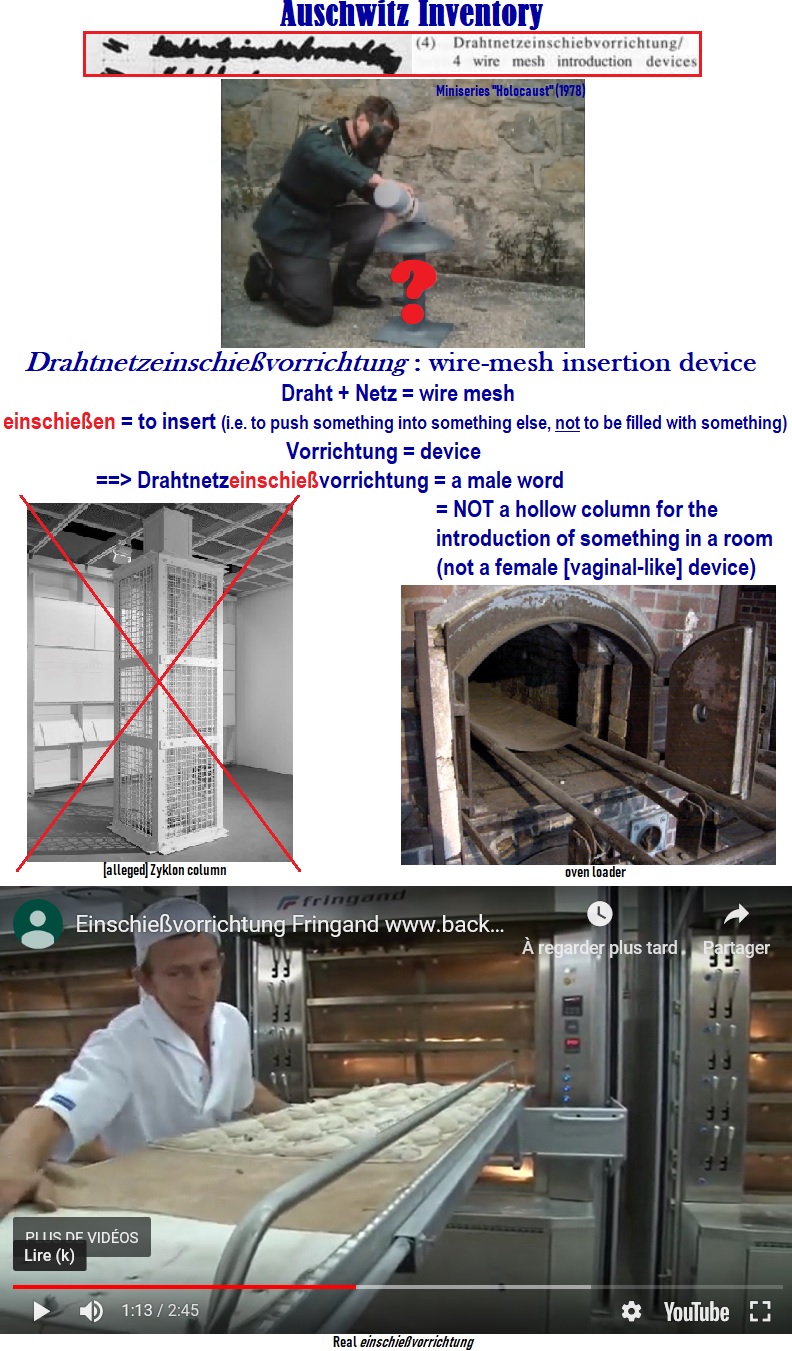See below the inventory sheet as it existed - the line item for Drahtnetzeinschiebevorrichtungen is indicated on the line for "room 2", with the numeral 4

However, Pressac manipulates this evidence and re-assigns the items to "room 1" ie the "gas chamber", as this is where he needs the devices to be located were they to be understood as murder weapons:

This is a clear mis-attribution from the devices' location in room 2, to room 1, to force adherence to a homicidal interpretation.
